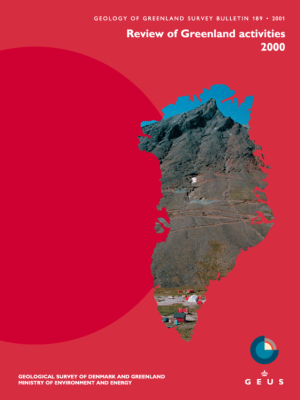Palaeolimnological investigation of atmospheric pollution in the Søndre Strømfjord region, southern West Greenland: accumulation rates and spatial patterns
DOI:
https://doi.org/10.34194/ggub.v189.5154Abstract
High-latitude ecosystems are inherently sensitive to natural environmental stress as a result of extreme seasonal variations in light and temperature, nutrient limitations, as well as other physical and chemical characteristics; consequently, these regions are quite vulnerable to the addition of pollutant stress. There is a poor understanding of spatial and temporal patterns of atmospheric pollution in the Arctic, because of the lack of monitoring stations and networks for current and past atmospheric deposition. Today, however, the Arctic is recognised as an important focus for long-range transport of contaminants, particularly from strong air flows which carry airborne pollutants from industrial regions at lower latitudes, e.g. heavy metals and persistent organic pollutants (POPs). A diverse range of anthropogenic pollutants has been shown to be present across much of the region (Aarkrog et al. 1997; AMAP 1998). Of particular importance are compounds, such as mercury and POPs, which present a risk to native fauna and also inhabitants. It is hypothesised for some volatile organic compounds, as well as possibly for mercury, that there may be a latitudinal fractionation that contributes to the continued mobilisation of these compounds from warmer to colder climates, where they are ultimately deposited and stored (Wania & Mackay 1993). Experimental data and limited field research support this ‘cold-condensation’ hypothesis, at least for some POPs (Blais et al. 1998).
Downloads
Published
Issue
Section
License
This article is distributed under a CC-BY 4.0 licence, permitting free redistribution and reproduction for any purpose, even commercial, provided proper citation of the original work. Author(s) retain copyright over the article contents.


